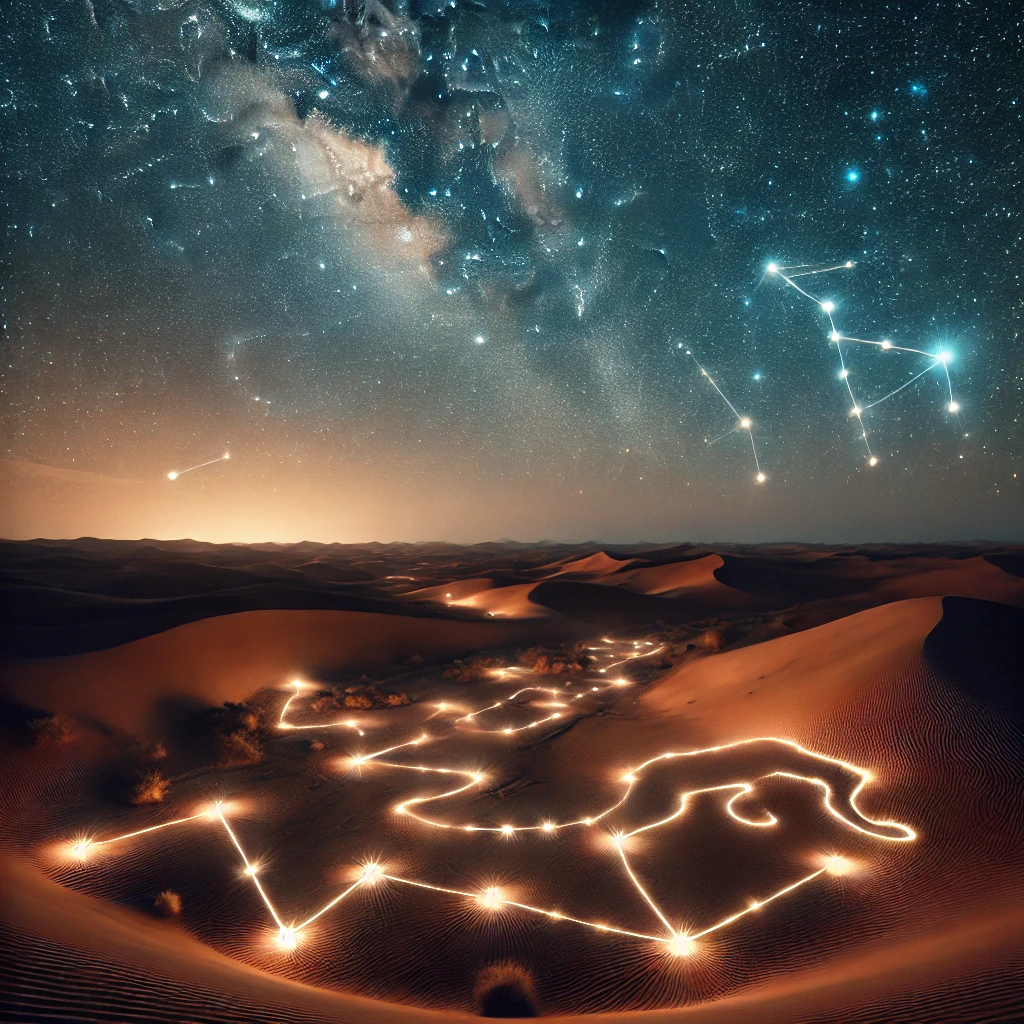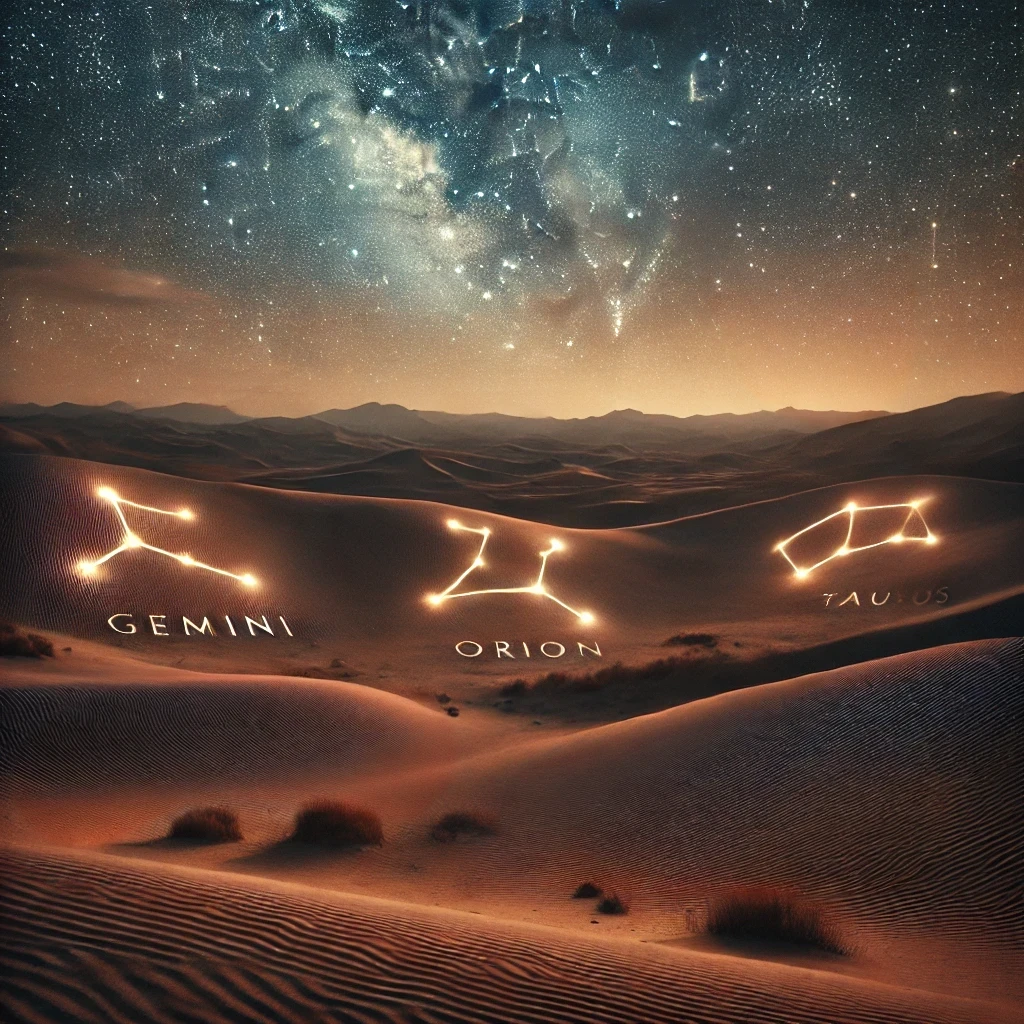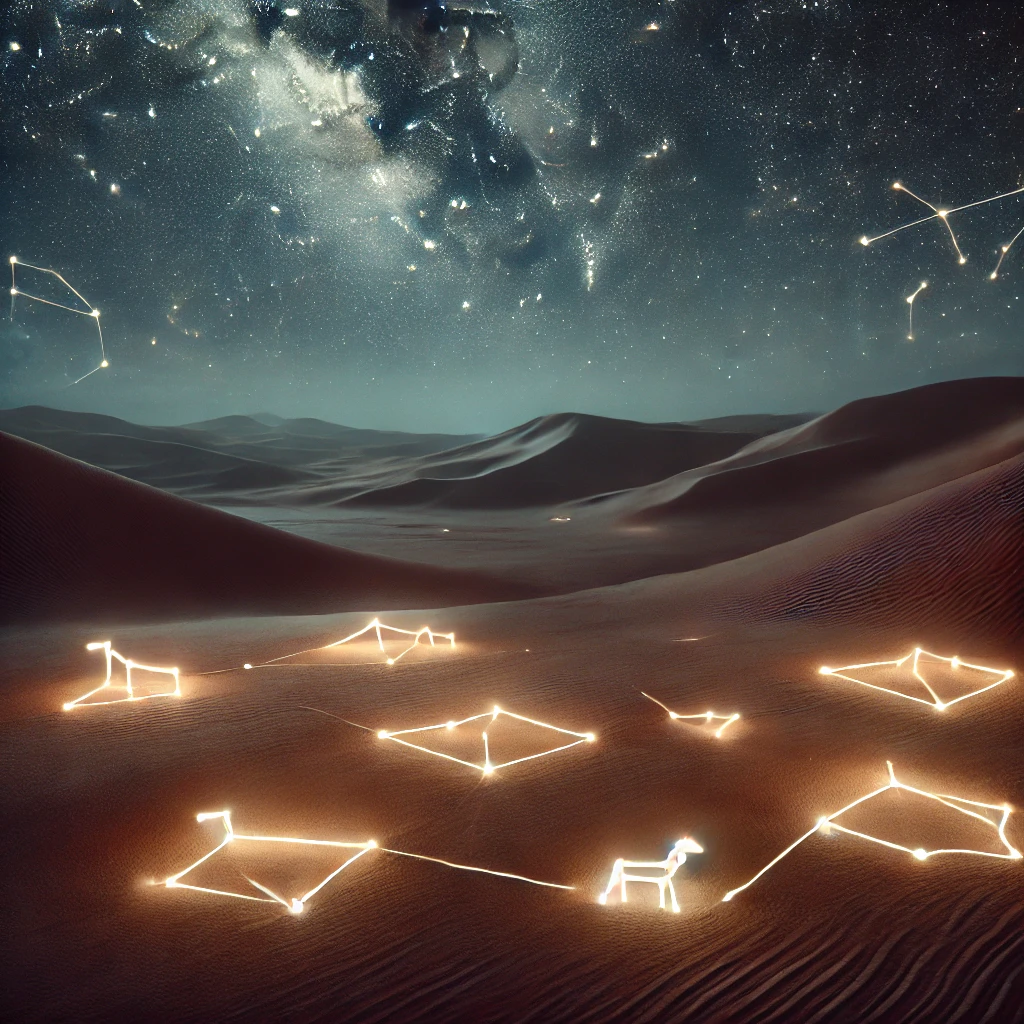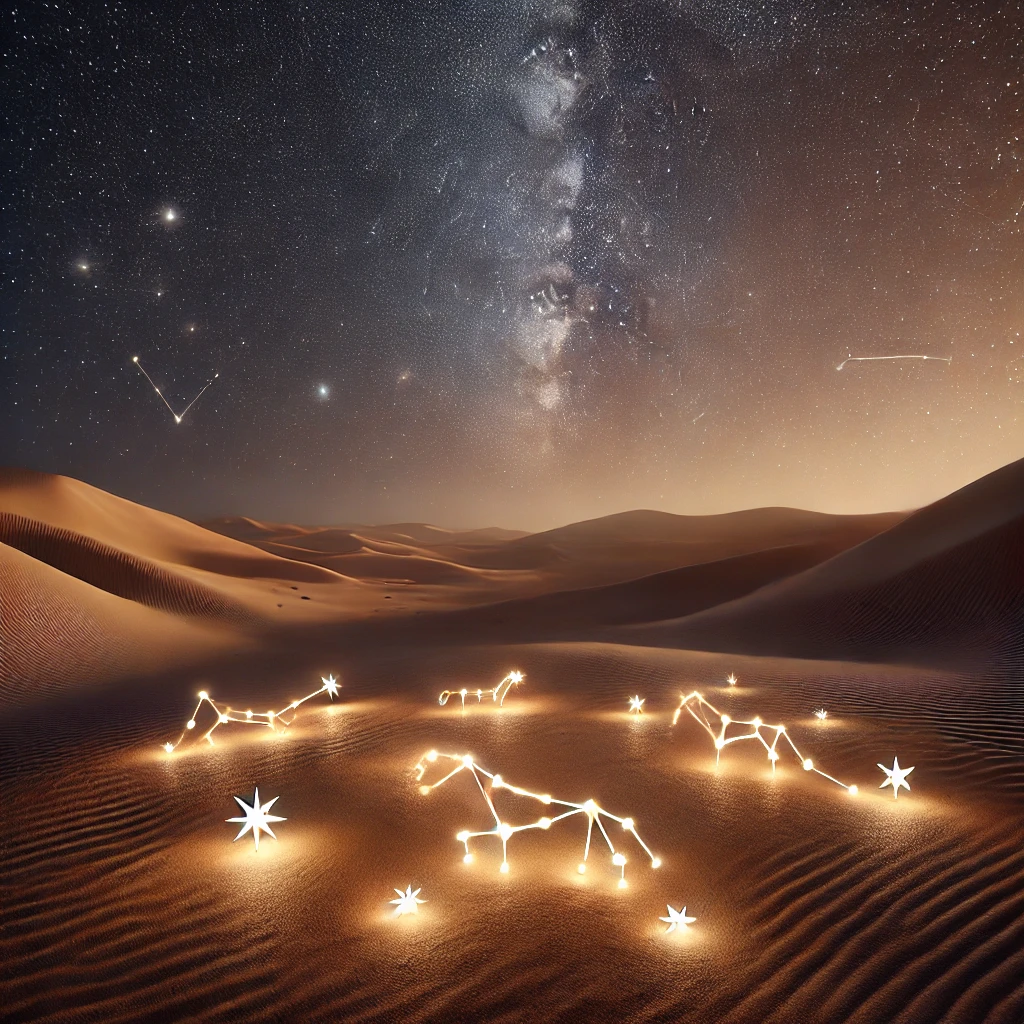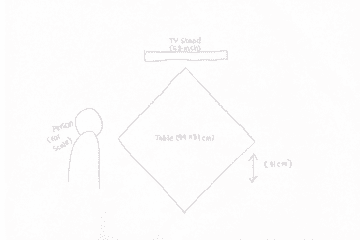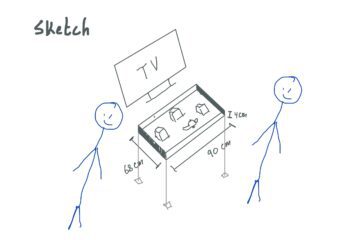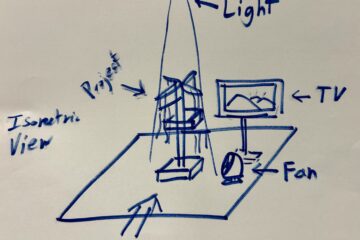Overview:
“StarFall” is an immersive art installation set in the serene expanse of the Sweihan desert, inspired by the celestial beauty of the Al Quaa Milky Way Spot in Abu Dhabi. This project seeks to map the heavens onto the earth by recreating three constellations with 3D-printed stars that light up and produce melodious tones as visitors approach. It blends the awe of stargazing with interactive technology, with a unique auditory and visual experience under the desert night sky.
Images generated by AI to help visualize the concept
Interaction:
The interaction design of our installation invites visitors to explore constellations as though walking through a mirrored night sky spread across the desert floor. As people move closer to each cluster of 3D-printed stars, sensors activate, causing individual stars to light up and play unique musical notes. We’ve also added a Color Imprint feature: as visitors move through the constellation field, they leave behind a faint color “signature” that lingers briefly before fading. The colors shift based on movement speed, with slower movements producing one hue and faster movements creating another. This interaction transforms movement into a creative act, letting visitors “compose” an ambient piece of music by simply strolling through the constellations. Each step triggers a unique blend of light and sound, creating a multi-sensory experience that brings the stars to life through touch and movement.
The project draws deep inspiration from the desert landscape, whose vastness and silence make it a perfect setting for a piece that bridges earth and sky. In this setting, the stars can feel almost close enough to touch, evoking a timeless sense of connection between the ground we walk on and the cosmos above. By placing constellations within the desert, the installation highlights this connection between the natural landscape and the night sky.
Each interaction in the desert becomes heightened by the vast, quiet surroundings, where light and sound feel especially vivid against the stillness. The installation’s design transforms every movement into a part of the desert’s landscape, bringing stars to life in a way that feels natural and harmonious with the environment. In this space, visitors can experience the stars as close, tangible elements, blending the ground beneath their feet with the sky above. This allows people to see the desert not just as a setting but as an active part of the experience, inviting them to journey through both familiar constellations and the unfamiliar feeling of walking among the stars.
Planned Technical Implementation:
Our planned technical setup begins with the design and testing of the sensors that will detect visitors approaching each constellation. We are experimenting with both ultrasonic and infrared sensors to see which best senses movement in the open desert. These sensors will be placed near clusters of stars, allowing us to create an effect where stars light up and sounds play as people get closer. Since the desert has its own challenges, we need sensors that are both sensitive and reliable, ensuring they work smoothly even in this outdoor environment.
For the lighting, we’re using NeoPixel LEDs, which allow us to control each light individually for brightness and color. Each 3D-printed star will be fitted with one of these LEDs, giving us flexibility to create different lighting effects across each constellation. We’ll program the lights to glow softly at first, then gradually get brighter as someone comes closer, mimicking the feeling of stars coming to life. LED lights will be adjusted to ensure the glow is natural.
Sound is another key element, and we’ll add small speakers near each star cluster to play gentle, ambient tones. The speakers will be set up to play sounds only when someone is close enough to a star, creating a layered effect as more stars light up and different notes play in harmony. The goal is for the sounds to feel immersive but subtle, blending naturally with the quiet of the desert.
Each constellation will be wired as a separate segment to make setup easier once on-site. We’ll also use portable power sources to keep the installation running throughout the night, ensuring each component is able to work smoothly in the desert. With this setup, we aim to bring an interactive, starlit experience that connects visitors to the beauty of the cosmos.
Progress:
Research: So far we’ve done the research for the constellations that we want to replicate on the ground. Those are Gemini, Orion, and Taurus. These three constellations can be located in the night sky in Abu Dhabi currently and show during the month of November too, the same month we will be going to the Desert to install our project. The reason we want to replicate these three constellations is that our goal is to bring the sky to the ground
Physical components: We’re trying out different sensors (IR sensors with different distances and PIR sensors) to see which one works best. We’re also working on the design of our stars that we want to 3D print. Going forward, our team will finalize the integration of sensory technology—ensuring the distance sensors accurately trigger the desired light and sound sequences. Prototyping individual constellation segments will continue, with adjustments made for optimal sensor placement and LED brightness.
We’re also brainstorming ideas for other sensor integration such as pulse rate to give the installation a more dynamic look and feel so that users can resonate with the idea and get some participatory values from the experience as well. This is an ongoing process and we hope to achieve a better direction in upcoming days.
Final tasks include the mass fabrication of the 3D stars and their assembly in the desert, ensuring each constellation is accurately mapped and securely installed. As we move towards completion, our focus will remain on maintaining the harmony between technology and the natural desert environment, ensuring “StarFall” not only mimics the sky above but enhances the human connection to the cosmos.
Project Implementation Plan:
To bring “StarFall” to life, we’ll begin by carefully planning and designing the installation. First, we’ll map out the exact positions of stars in the constellations Gemini, Orion, and Taurus, based on star maps. Each constellation will be represented on the desert floor, with stars placed in their accurate positions to mirror the night sky.
We’ll create 3D models for each star, designing them to match the brightness and shape of stars in the sky. These models will be built to hold small LED lights, which will give the stars a soft, glowing effect when they light up. At the same time, we’ll decide how visitors will interact with the installation, working out how sensors, lights, and sounds will react as people approach the stars.
Next, we’ll start testing the components that make the experience interactive. First, we’ll try out different types of sensors to see which ones detect movement best. Since the desert environment can be tricky with all the space and sand, we want sensors that are reliable and can sense when someone is near. Then, we’ll experiment with the lights and sounds, setting up the LED lights to get just the right brightness and color. Each constellation will also have small speakers nearby that play gentle, musical notes. We’ll make sure the sounds are clear but not too loud so they blend into the peaceful desert surroundings.
After testing, we’ll move on to combining all the hardware and programming it to work together. Using the Feather board, we’ll connect the sensors, LEDs, and speakers so that everything responds to visitors’ movements. We’ll write a code that makes the lights and sounds change smoothly, becoming brighter or softer as someone walks closer. To keep the design organized and easy to set up, we’ll build each constellation in parts so that we can test and adjust each section on its own.
Once the design is ready, we’ll start producing the stars and other parts of the installation. Using 3D printers, we’ll create each star model, fitting them with LEDs and wiring. The bases for each constellation will be laser-cut from materials like acrylic or plywood. These bases will help keep the stars in place on the ground. We’ll also make protective cases for the electronics, like the microcontrollers and sensors, to shield them from dust and sand.
Technology Implementation and Fabrication Techniques
Sensors
- Proximity Sensors: These would detect when visitors approach a specific constellation cluster, triggering the lights and sounds associated with each group of stars. Ultrasonic or infrared sensors could work well here, given their range and sensitivity in detecting movement.
Lighting
- LEDs (NeoPixels): Each 3D-printed star will contain NeoPixel LEDs that light up individually in response to movement. NeoPixels would allow precise control over each light’s color, intensity, and timing, giving us the flexibility to program different lighting effects for each star cluster.
Sound Components
- Speakers: Small, discrete speakers kept near the star clusters will play unique musical notes when activated. These speakers provide high sound quality, adding a rich, ambient layer to the experience that complements the visual effects and immerses visitors in a multi-sensory interaction.
Fabrication Techniques
- 3D Printing: The stars and constellations will be created through 3D printing, allowing precise, intricate designs that resemble clusters of stars. We might use translucent filament to give the stars a natural, diffused glow when lit. Additionally, custom 3D-printed diffusers will be embedded in the stars to soften the LED light, enhancing the natural, starlike effect.
- Laser Cutting : For any support structures or bases for the 3D-printed stars, we might use laser-cut acrylic or plywood. This would ensure stability and create clean, precise shapes to anchor the stars to the desert floor. Laser cutting will also be used to create enclosures for protecting electronic components like microcontrollers (e.g., Feather board), shielding them from environmental factors such as dust and sand.
Presentation Link: https://www.canva.com/design/DAGU2YE6ZwU/f1uIGDMNGJLCb13_nM4X5A/view?utm_content=DAGU2YE6ZwU&utm_campaign=designshare&utm_medium=link&utm_source=editor
